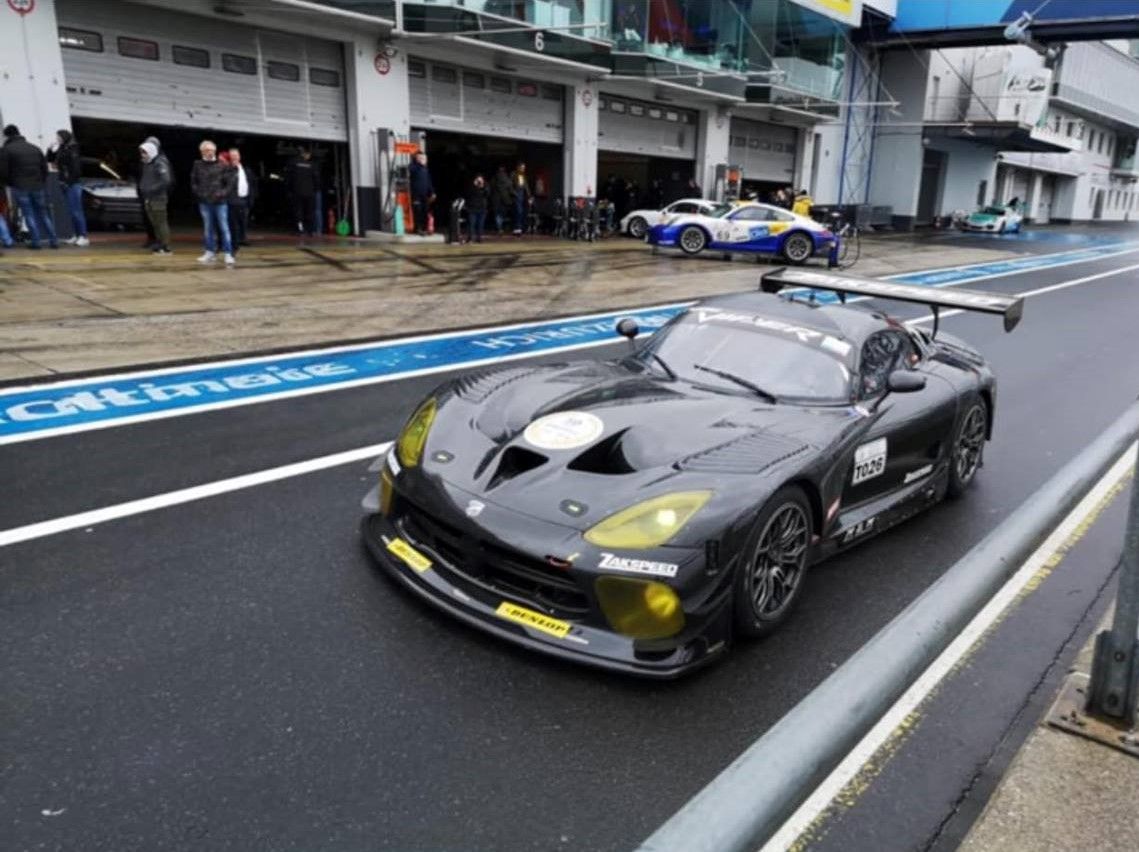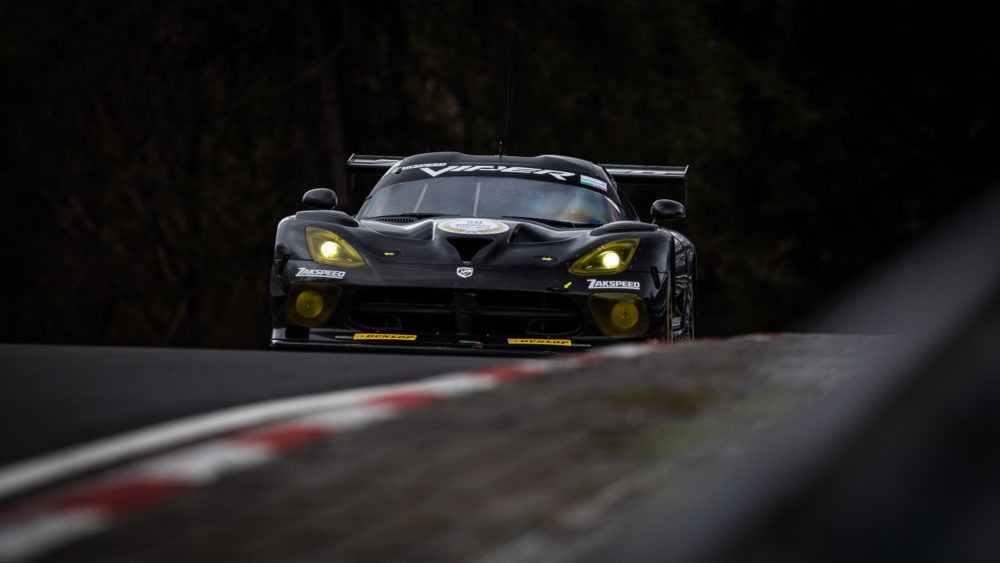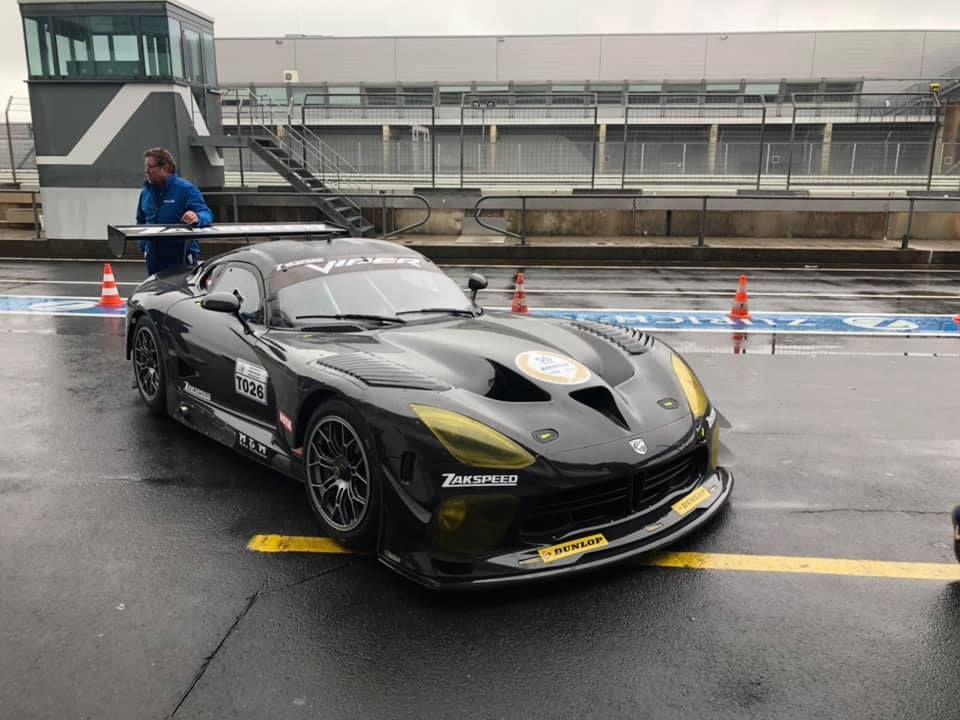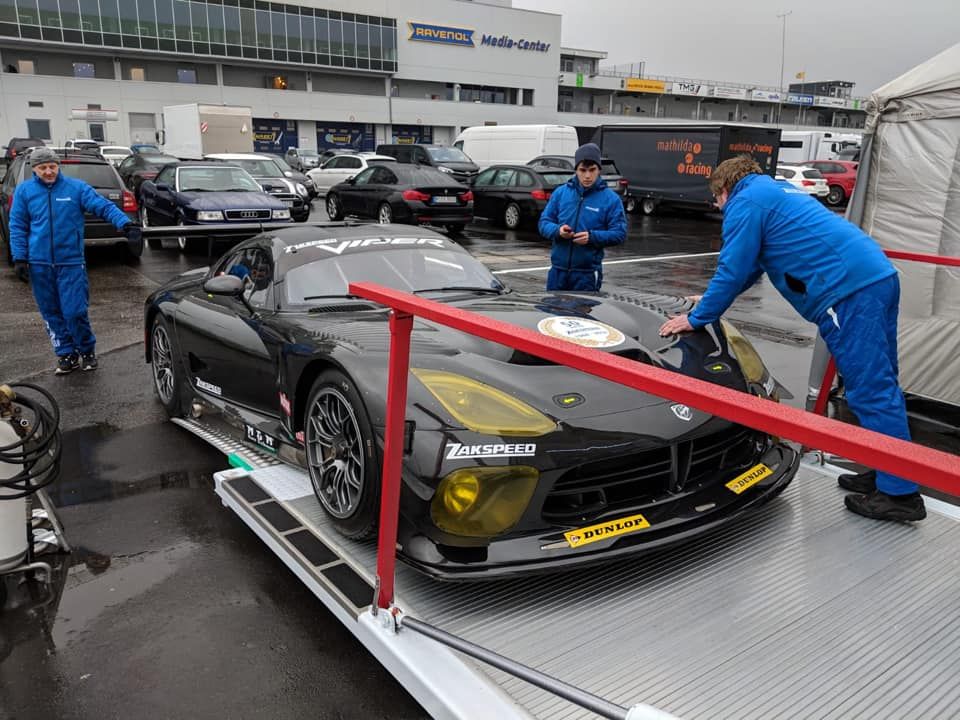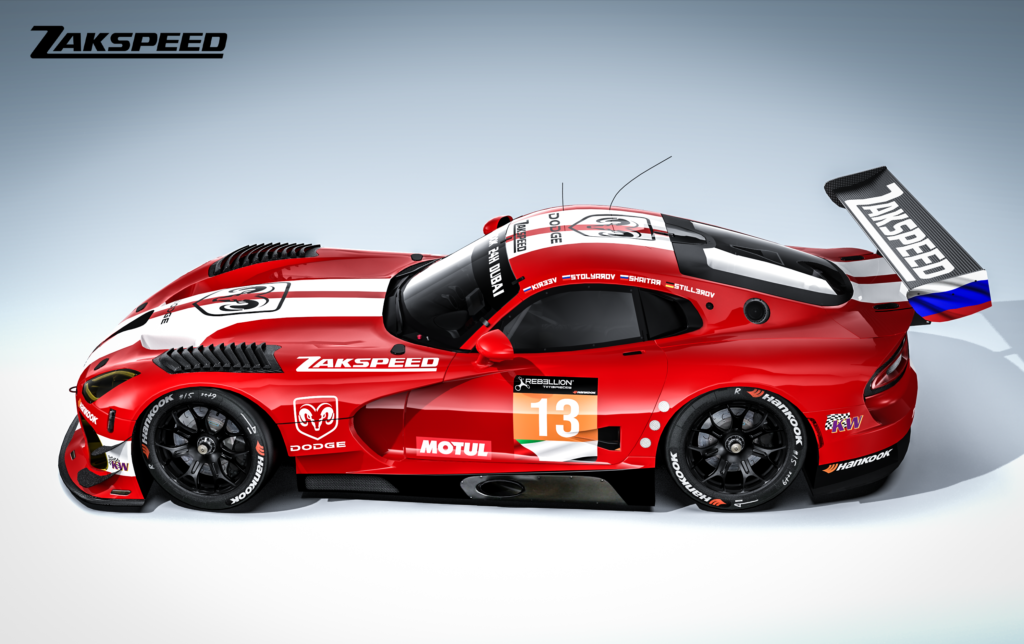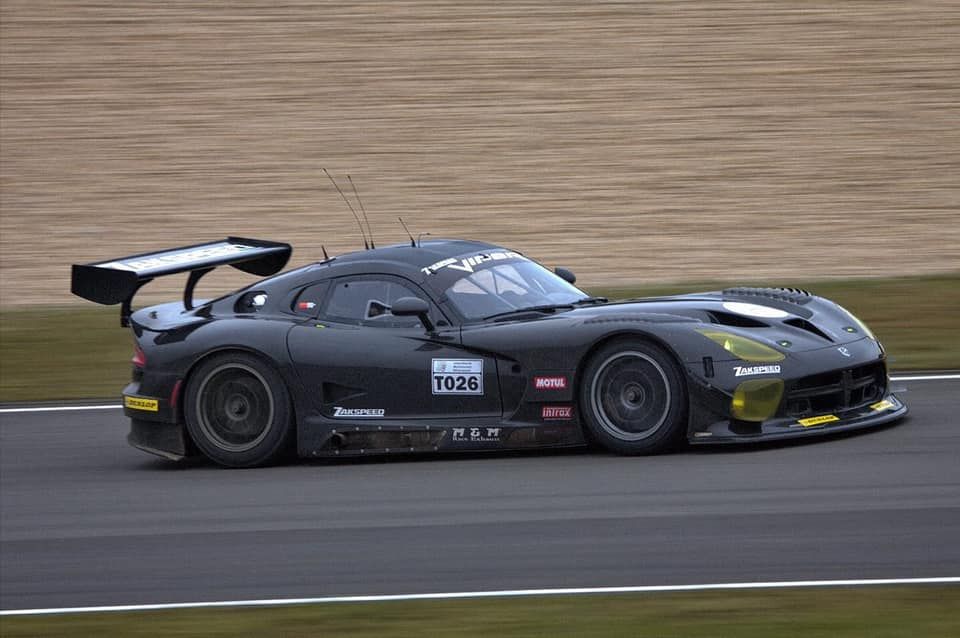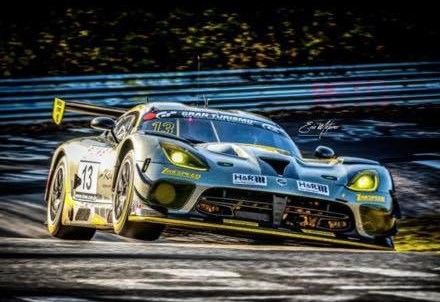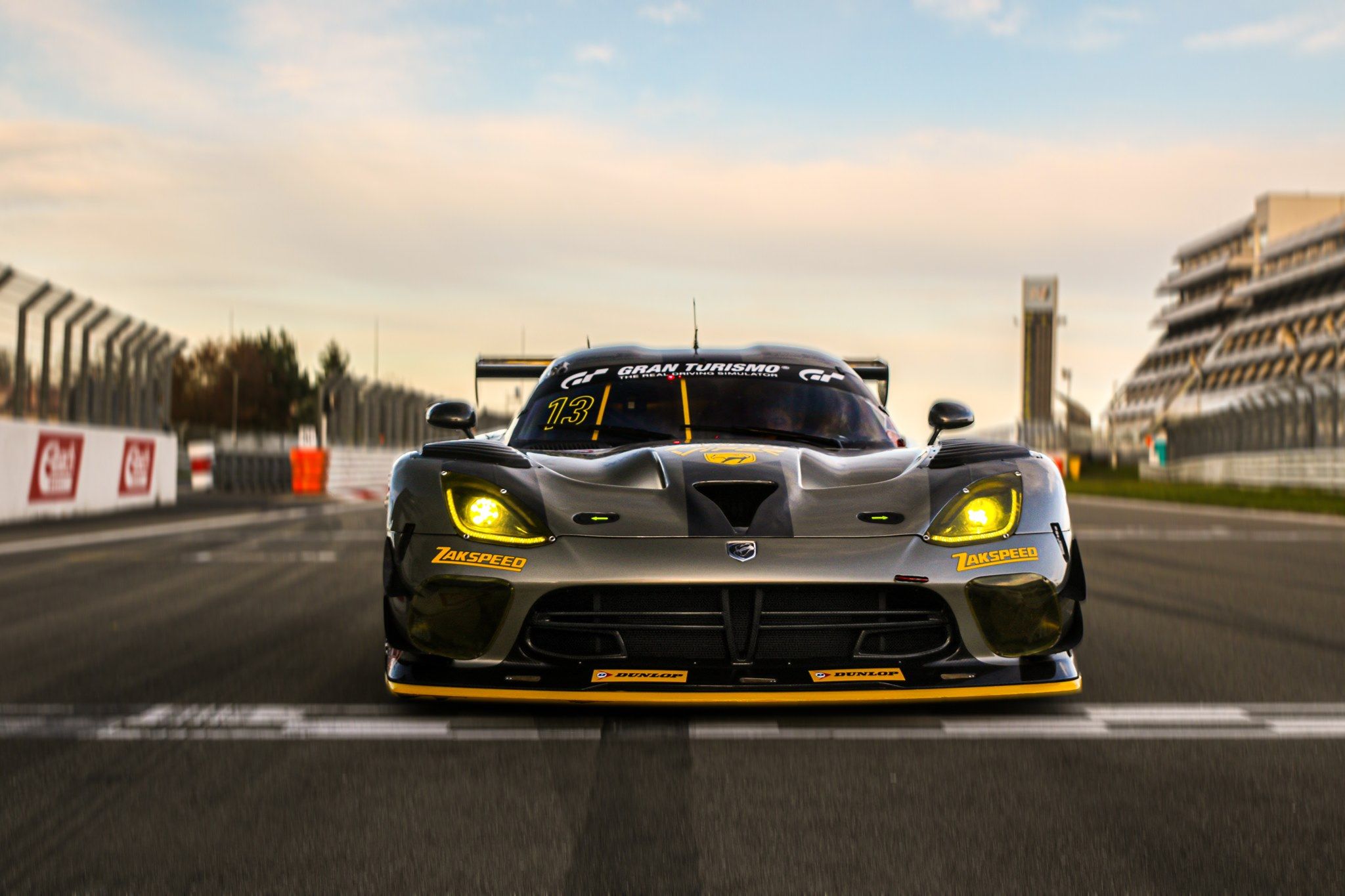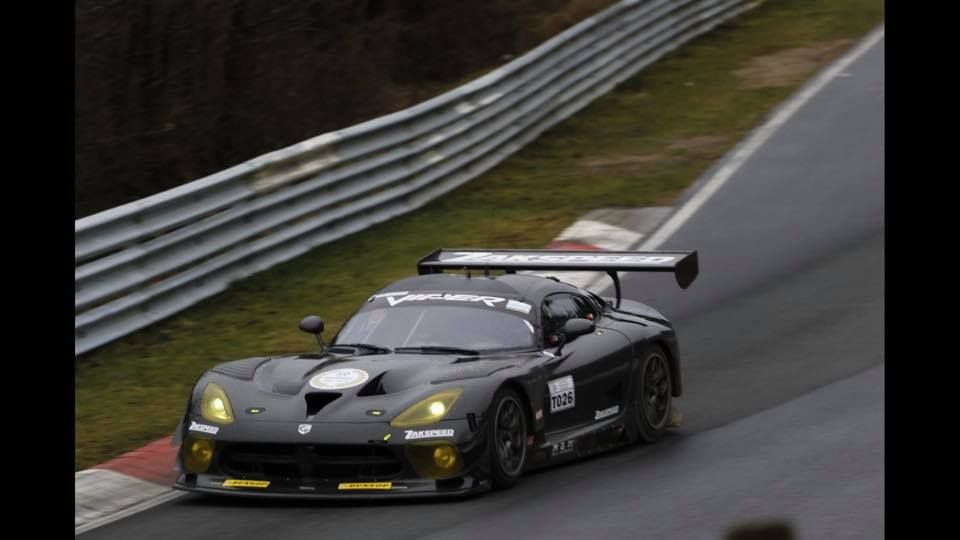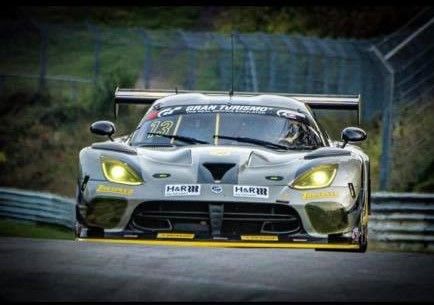Dodge's Viper, arguably Lee Iaccoca's biggest gift to gearheads ever, has been seen racing on the world's race tracks for almost three decades and, although the last road-legal Viper rolled off the production line in 2017, its race-bred namesake is still homologated for racing in the GT3 category which is why famed German tuner and race entrant Zakspeed decided to give the Viper one more shot of proving itself in a 24-hour race next January as it will contest the annual 24 Hours of Dubai.
The Viper is back but not how you'd want it
The most recent iteration of Dodge's meanest and grittiest product to date, the V-10-engined Viper, which was also known as the SRT Viper this time around, was discontinued three years ago, in 2017. At the time, seven years after the previous Viper generation had been canceled , FCA decided to close down the Conner Avenue Assembly Plant where the Viper was being made and turn it into a museum.
While the day the last Viper was signed off was a sad day for us all, it didn't come as a surprise with FCA announcing all the way back in 2015 that, due to lower-than-expected sales, the Viper would see its way out of Dodge's lineup in just two years' time. With just 1,211 units sold in 2016 and 2017 combined, it's no wonder that Dodge could no longer justify keeping the neck-bending two-seater going when, for instance, the company moved almost 10,000 units of the Dodge Challenger in the U.S. in that same two-year period.
You'll say it's blasphemous to compare the two and we agree but, then again, the Challenger was the only other two-door car Dodge offered. We've seen many rumors emerge in the last few years about a possible rebirth of the Viper nameplate and we've covered some of them but FCA always came out to soundly kill off to our hopes and dreams.
As such, beyond seeing the very last Viper sell for really good money, which came to suggest there's still folks out there in love with this car, our only source of joy when it comes to the Viper has to do with the racing versions it has spawned over the years as some of them are still in use.
This week, which didn't seem to yield much in terms of good news, was made a little bit brighter by Zakspeed's official announcement that it will indeed field one GT3-R in the upcoming Dubai 24 Hours that will take place between the 14th and the 16th of January, 2021. The team's history with Dodge's front-engined monster goes all the way back to 1999 (something which you can read more below) and that's why we're happy to see the car back with an outfit that really cherishes it and, what is more, an outfit that also campaigned it as recently as 2019.
Was supposed to race 2 cars in VLN 2. The race got stopped after 2 laps because of snowfall. Was already up to P4 in the Zakspeed Viper. Qualified the Black Falcon Porsche P2 in class. Turned plenty of laps in both cars these last few days. Thanks Zakspeed and Black Falcon! pic.twitter.com/Wnib1hZ82K
— Jeroen Bleekemolen (@jbleekemolen) April 13, 2019
Zakspeed will field its very own Viper at Dubai alongside a Mercedes-AMG GT with the Viper featuring a color combo that's well known to each and every Viper fan out there. It is, of course, the red-over-white-stripes scheme that was also sported by the Daytona-winning Viper GTS-R of Team ORECA back in 2000. Zakspeed too has run these colors in the past with a red-and-white Viper of its own coming home in third place at the Nordschleife a mere 15 years ago.
Indeed, as Zakspeed and the Viper essentially grew together racing on Germany's most famous road course, the team shied away from competing with the American brute elsewhere but that all changed in the late '00s when the GT3-spec Competition Coupe model came along to replace the original GTS-R. With that, Zakspeed achieved limited success on the European level in the European FIA GT3 Championship while also racking up even more miles at home, on the Nuerburgring.
The latest handlers of the Viper will be Evgeny Kireev, Sergey Stolyarov, Viktor Shaytar, and Hendrik Still. While both Still and Shaytar are rather well-known figures to GT racing fans, Still especially being familiar with the car as well after driving it in 2019, Kireev and Stolyarov are less experienced when it comes to driving GT machinery. As ever in the 24H Series, the Zakspeed team had to come out with a driving roster that combines professional or semi-professional drivers with what's become known as gentleman drivers or, effectively, quick amateurs.
"We're looking forward to starting the next season in January at the 24 Hours of Dubai," said Peter and Philipp Zakowski in a statement quoted by GT-Place.com. "In addition, we are of course pleased that we are bringing the Viper back onto the track with this project. After competing on the Nordschleife with the Viper in 2019, we were often asked when it would be back. Now the time has come, and like most fans, we can hardly wait any longer," the father and son duo that runs Zakspeed added.
The Viper GT3-R is an unsung hero of the GT3 world
It was all the way back in the summer of 2013 that Riley Technologies took the wraps off the Viper GT3-R, a more pedestrian version of the 2012 Viper GTS-R that was built to comply with the burgeoning GT3 rules. While the GTS-R was a GTE-spec Le Mans racer that took on Ferrari, Porsche, Chevy, and the rest in the American Le Mans Series (and, later, the IMSA Tudor United Sportscar Championship), the Viper GT3-R was supposed to tackle the growing number of GT3 cars competing in the Pirelli World Challenge and also oversees.
Powered by a race-prepped version of Viper's ubiquitous engine, the 8.4-liter N/A V-10, the GT3-R developed 680 horsepower and 640 pound-feet of torque in unrestricted trim. That's quite a lot for the Xtrac six-speed sequential transmission with paddle shifters to cope with when you consider that, in fact, no GT3 car can develop more than 550 ponies when racing, its output rigidly controlled by the BoP system. Even its big brother, the GTS-R, only had about 600 horsepower to play when running to IMSA's or the ACO's full homologation.
Fun times in the Zakspeed Viper GT3-R at the Nordschleife during VLN 1. Learned a lot on the car at this track and it was awesome to drive! Got to the finish in P21 without any issues. #ZakspeedViper #nurburgring #nordschleife #VLN pic.twitter.com/9QnTBRxta8
— Jeroen Bleekemolen (@jbleekemolen) March 24, 2019
The GT3-R, a $460,000 proposition at a time when you could get Mercedes-AMG's GT3 model for about $453,510 or BMW's Z4 GT3 for $450,624, was met with little interest from privateers. If the Competition Coupe GT3 of 2006 proved popular straight out of the box when it was introduced by ORECA and even managed to bag a pair of FIA European GT3 Championship titles in what were then the early days of the GT3 formula, the GT3-R came at a time when a team had about a dozen other options beside the Viper to choose from and, seemingly, the American car was nowhere near the top on anyone's list. After all, even Callaway Competition's Corvette C6 GT3, which had been popular and successful at the same time as the Competition Coupe GT3, proved less-than-compelling for customers in C7 guise when that model was advertised for about $480,000.
Riley Technologies, however, was hell-bent on giving the GT3-R a racing career and shook down the car in late 2013. Ex-Porsche man Ben Keating, a gentleman driver who also happened to run Viper Exchange, the biggest Viper dealership in the US, was plotting to run a GT3-R in the IMSA Tudor United Sportscar Championship in 2014 with assistance from Bill Riley's outfit.
Riley was also behind the GTE-spec GTS-Rs, something that was pretty obvious to anyone because the cars looked nigh on identical and, in fact, at least one GTE car was converted to GT3 spec during its lifetime. But, for 2014, we had both GTS-Rs and GT3-Rs competing in the IMSA United Sportscar Championship, named in that way because it was the result of the merger between the NASCAR-owned Grand-Am Road Racing Series and IMSA's American Le Mans Series. The GTS-R would race in the new series' GTLM class, which was basically the GTE class from Europe, while the GT3-R would run in GTD, a class for GT3 cars and other grand tourers that were made to keep up with GT3 cars (such as Porsche's 911 GT America).
For the 2014 edition of the 24 Hours of Daytona, three Vipers were present: Riley's GTD entry and the two pukka Works GTLM cars under the SRT Motorsports banner. Those two would combine in 2014 to win the title in the teams' standings while Kuno Wittmer became the GTLM Drivers' Champion. Jonathan Bomarito, Wittmer's team-mate was vice-champion and SRT/Dodge finished runner-up in the manufacturers' standing in what ended up being Viper's last year in GTLM.
The withdrawal of Gary Johnson's SRT Motorsport squad meant that everyone's attention at SRT and Riley Technologies fell on the GTD effort from 2015 onwards. That was a good thing, especially looking back on the early days of that program which included a huge fire that occurred during the car's second-ever outing at the 12 Hours of Sebring. However, by the second half of that first season, the Viper had found some rhythm and managed to score two class wins, at Austin and at Canadian Tire Motorsports Park (Mosport) in Canada. Each time, it was Dutchman Jeroen Bleekemolen paired with Keating that delivered the goods.
2015 got off to a perfect start as Riley's Viper topped the timing sheets during the Roar Before the 24, the annual pre-season test days held at Daytona International Speedway. What is more, the team was able to add a second car for the entire season with #33 being chassis #C001 while car #93 was chassis #C004, the winner of those two races in '14. The #93 car proved its worth once again by winning the GTD class at Daytona, Messrs Keating, Farnbacher, Carter, Wittmer, and Lawrence setting up the tone for the next couple of seasons in GTD where the Viper stood out as a clear contender almost every time.
More wins came at the Six Hours of Watkins Glen (allowing Carter and Lawrence to seal the GTD title in the North-American Endurance Cup towards which only the results in the four longest races are counted), Road America, and Austin. The last two wins were achieved by Bleekemolen and Keating who were sixth in the end-of-the-year GTD standings. 2015 was also the year when Keating realized his dream of racing the Viper at Le Mans by virtue of a GTE-Am entry with the Viper Exchange/Riley team.
Team zakspeed wil join the Dubai 2021! 🏁
Wow! This will be an incredible introduction of @Zakspeed_eu. Besides the entry with the Mercedes-AMG GT3 #55 , for the Dubai 2021, they will also race with this beauty: the Dodge SRT Viper GT3-R #53 . 😍 #Dodge #viper #mercedes pic.twitter.com/5TOokatowz— 24H SERIES (@24HSERIES) October 30, 2020
In 2016, the Riley team gave the Viper its final full season of IMSA competition which included one last prestige victory that was achieved right at the end of the season with Bleekemolen, Keating, and Miller coming out on top at Petit Le Mans. Moreover, Keating and Bleekemolen also conquered Road America and Detroit meaning they missed out on the GTD title by less than 30 points.
Beyond its results in IMSA competition, the Viper GT3-R was also seen racing in the Pirelli World Challenge (currently known as the GT World Challenge America series). One chassis, in particular, was very prolific in that series, namely the ex-GTE car that was campaigned by both Tim Pappas' Black Swan Racing and by McCann Racing with Michael McCann driving. Lone Star Racing also competed with the Viper in both IMSA and PWC. As it happened, both Lone Star and Riley ditched the Viper in favor of Mercedes-AMG's GT3 model.
Elsewhere in the world, Swiss ANTeam raced a Viper in the V de V Endurance Championship with mixed results while Race Art of Holland competed in the country's Supercar Challenge with another example for a while. Race Art also planned to do the 24 Hours of Dubai three or four years ago but the plans didn't come to fruition. Then there was Zakspeed...
Zakspeed and Viper go together like milk and cereals
For years, the 24 Hours of Nurburgring was run as a race centered on touring cars or somewhat milder grand tourers. Porsche did manage to snatch a few wins in the '80s including a much-lamented upset in 1988 in front of both the BMW and Ford factory efforts, the latter of which featuring the gorgeous, Texaco-sponsored Sierra Cosworth RS500 with its monstrous turbocharged engine developing well over 400 horsepower in qualifying trim. But GTs would only become the 'hot potato' in 1999 when the German organizers allowed a variety of FIA GT-style cars to take part.
Zakspeed, a team that had raced in a variety of championships in both Europe and North America, most notably bagging a European Touring Car Championship title in the mid-'70s with Ford before embarking on some even more audacious adventure alongside the Blue Oval. Zakspeed also raced a Ford-engined and Roush-tuned Probe GTP in the IMSA GT Series in the '80s and was also quite rather successful in the DTM, first with Mercedes-Benz and then with Opel.
For '99, Zakspeed seized the opportunity of entering a proper GT car in the 24-hour race around the 'Green Hell' and brought along a Viper GTS-R, the sort of car that also won that year's FIA GT Championship as well as the GTS category in the American Le Mans Series and at Le Mans. In short, it was the world's best production-based grand tourer and it showed. Facing the challenge of a variety of 993-generation Porsches (no 996s yet!), the yellow Viper managed to win in the hands of Peter Zakowski, Hans-Jürgen Tiemann, Klaus Ludwig, and Marc Duez.
That was the first time in the race's history that a non-German car had won the race although, it must be said, Zakspeed worked round-the-clock to improve the Chrysler Viper (as it was known in Europe) and make it feel at home on the 'Ring. As you'd expect, the establishment (read Porsche) wasn't happy and Manthey Racing came back to claim victory in 2000 with a modified 911 (996) GT3-R that was able to beat the Viper not least because Zakspeed's car had to run with a lot of extra weight in the form of ballast.
Zakspeed relished the challenge and found out ways to place the ballast in the car without eating away into the car's performance. The result? Two back-to-back wins in 2001 and 2002, the final two wins for a non-German car to date. Pedro Lamy, Peter Zakowski, and Michael Bartels won in '01 while Robert Lechner replaced Bartels in the winning crew of '02.
By '03, things got pretty serious. BMW entered a pair of its V-8-engined M3 GTRs (basically, the same kind of car that had been outlawed in the ALMS at the end of the 2001 season) and both Opel and Audi followed suite with factory-backed operations featuring DTM cars modified to race on the Nordschleife. Porsche was represented by Manthey Racing and Alzen Tuning, both of which fielded turbocharged 996 models, Uwe Alzen's 'Turbinchen' being a 700 horsepower monster with the engine from a 962.
Audi, Porsche, BMW, and Opel really did not want to have to worry about the Viper and the rule-makers were seemingly on the same page because the American car was pegged back in a different way that year: it could only take 90 liters (23.7 gallons) of fuel at each pit stop which wasn't that much when you consider that its rivals had 110 or 120-liter tanks (between 29 and 31.7 gallons). Zakspeed devised two separate and very ingenious ways to out-smart the rule-makers.
As Dailysportscar.com's Johannes Gauglica reported at the time, one of the new systems designed by Zakspeed was a quick-change fuel tank that allowed the team to effectively switch out the empty tank for a new, full tank during each pitstop, thus saving huge chunks time. "All the regulations said about refueling was that fuel must be procured from the pumps on pit lane. they did not say where it then had to go," Gauglica wrote at the time. The team showed off its invention to the public during the race weekend right there in the paddock but the ADAC officials were less than chuffed about the whole affair and banned it on the spot on safety grounds.
Luckily, Zakspeed had brought a second car equipped with a 'classic' fuel cell but the team had another ace up its sleeve, again aimed at trying to bypass the rule regarding the 90-liter refueling limit. What the team dead was entering this second Viper as an American 'Dodge Viper' since the ADAC's ruling said that all 'Chrysler Viper' cars must comply with the 90-liter fuel tank rule. Armed with American homologation papers, Zakspeed hoped this gimmick would work as the 'Dodge Viper' came with a 120-liter tank.
Amazingly, it did, but only for a while. Gauglica reported that the scrutineers in fact did not catch on to the fact that the car had 'Dodge Viper' homologation papers instead of 'Chrysler Viper' papers and the whole situation was only unwrapped later on during the race itself when the marshals reported back to the race director that the Viper was taking on as much as 110 liters of fuel at each stop instead of just 90 liters.
"It seems to have been only then that the officials finally came to the decision that the car was in fact still a Chrysler, and the team was breaking the rules," wrote Gauglica who noted that the team received a 45-minute penalty when the discovery was made. Thereafter, though, the car got back going and kept taking on more fuel than allowed which meant it was back among the front runners by Sunday morning. At that point in time, the ADAC again ordered the team to park the car for 45 minutes which relegated it to a fifth-place finish. If we are to eliminate the 10 laps lost by the team due to the penalties, simple maths shows us that the Viper would've won the race ahead of the Opel team.
"Peter Zakowski argued that even a Dodge that started its life, and won a number of races, as a Chrysler was a Dodge if homologated as such," DSC wrote in '03. A plea bargain proposed to Zakowski by the organizers was refused by the Zakspeed boss because, the way he saw it, the car complied with the ADAC's rules and had valid paperwork. The ADAC, however, didn't agree saying "that even a Chrysler re-homologated as a Dodge was still a Chrysler. Also, one of the reasons given for the initial penalties during the race was that Dodge is not among the manufacturers found in the list of FIA homologated cars ."
Zakspeed took a jab at the organizers later on when he correctly claimed that never before had the list of FIA homologated cars played a part in whether or not a car was allowed to race in the VLN or the 24-hour race. To save itself any more trouble, the ADAC then decided to simply disqualify the car and then put up a 6.2-liter limit on engine capacity at a time when the Viper's V-10 displaced eight liters. This meant BMW bagged two wins on the trot in '04 and '05 but the Viper peculiarly returned in '06.
No, the team had not yet resorted to running the then-new Competition Coupe GT3. Instead, a decision was made to basically disconnect two of the engine's cylinders thus transforming the 8.0-liter V-10 into a 6.2-liter V-8 that was still good for 600 horsepower. "The rules state that we must use the original cylinder block, but it does not say we have to use all ten cylinders," the team argued and, this time, the organizers were left speechless. Sadly, though, the Viper racked up no more wins although it did finish third overall (and first in the A8 class) in both '06 and '07.
Then, in 2009, Zakspeed finally switched to the Competition Coupe which it ran in the VLN, the ADAC GT Masters, and the European GT3 Championship but the results were lackluster. A partnership with Mercedes-AMG brought Zakspeed back to the GT3 arena in more recent times and that's when the team decided it should perhaps give the Viper another shot at redeeming itself.
Finally, Zakspeed purchased a GT3-R in 2019 and decided to run it in the VLN with the likes of Hendrik Still, Florian Strauss, and Jeroen Bleekemolen doing the driving. The car's first outing was marred by a snowstorm while its second was less than stellar due to what the Zakspeed team called an "unfair BoP" that was "aimed at helping the newer cars." The GT3-R, however, did show some moments of brilliance with Bleekemolen running well within the top 10 during VLN 2 and VLN 3 when it had to make use of even less oomph. The constant changes in BoP prompted the team to quit the series after VLN 3.
Towards the end of the year, the team however announced its return but that only materialized in time for the last round, VLN 9. Again, the car ran strongly but it all ended in the pits due to some mechanical problems. The team announced that an entry in the 24 Hours of the Nuerburgring was on the cards for 2020 after the team had skipped the big race in 2019. But the COVID-19 put paid to those plans and Zakspeed focused on its ADAC GT Masters program with Mercedes-AMG.
Happily, though, as reported back in late October by GT-Place, Zakspeed filed two entries in the 2021 Dubai 24 Hours, one of the cars set to race in the Middle East being the Viper. The organizers soon confirmed the news saying that the Viper was among a massive 65 cars that made up the preliminary entry list for the event. With the livery and driver lineup now revealed, we just hope the pandemic is nice to us and allows for the Viper's growl to be heard around Dubai Autodrome come January!

